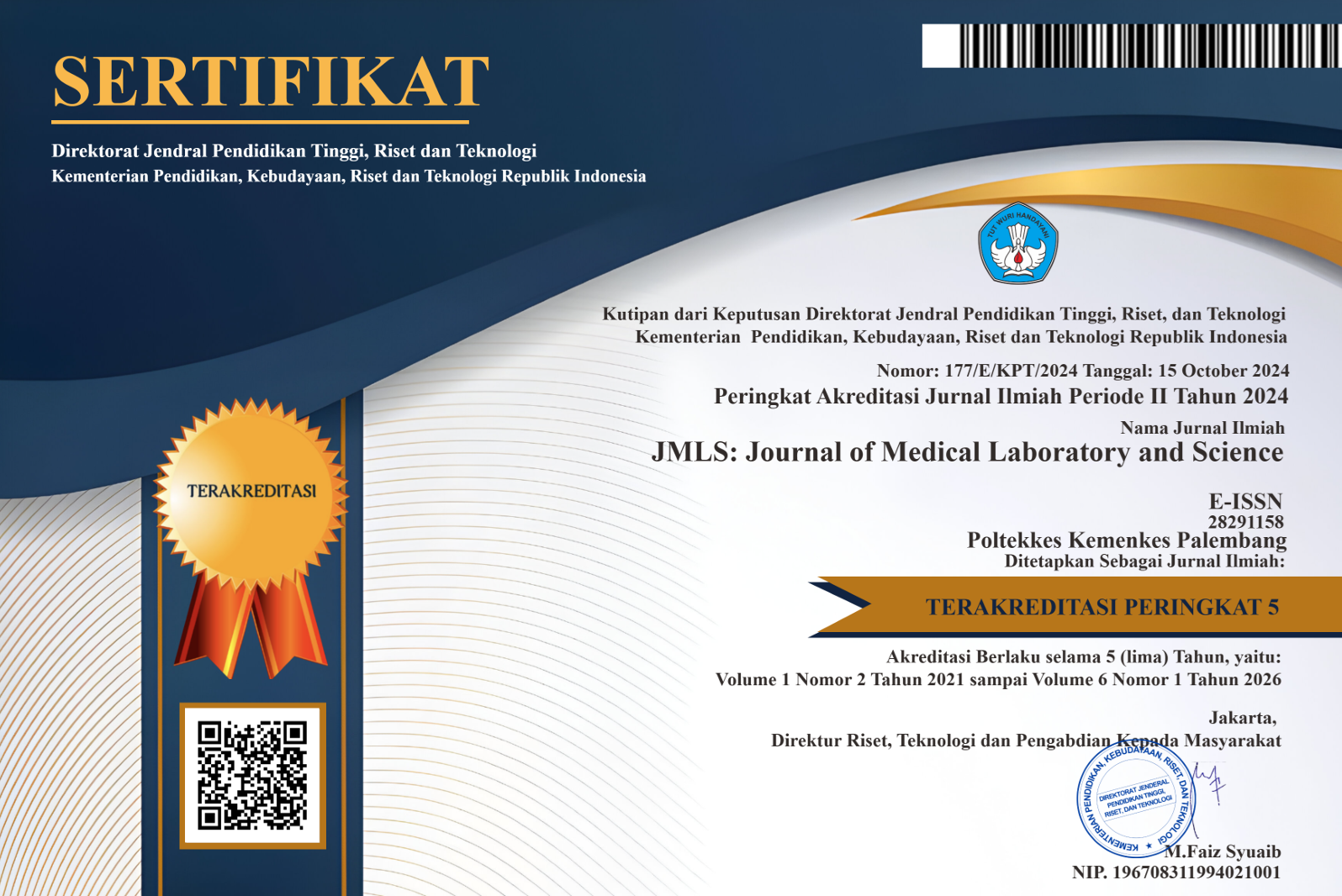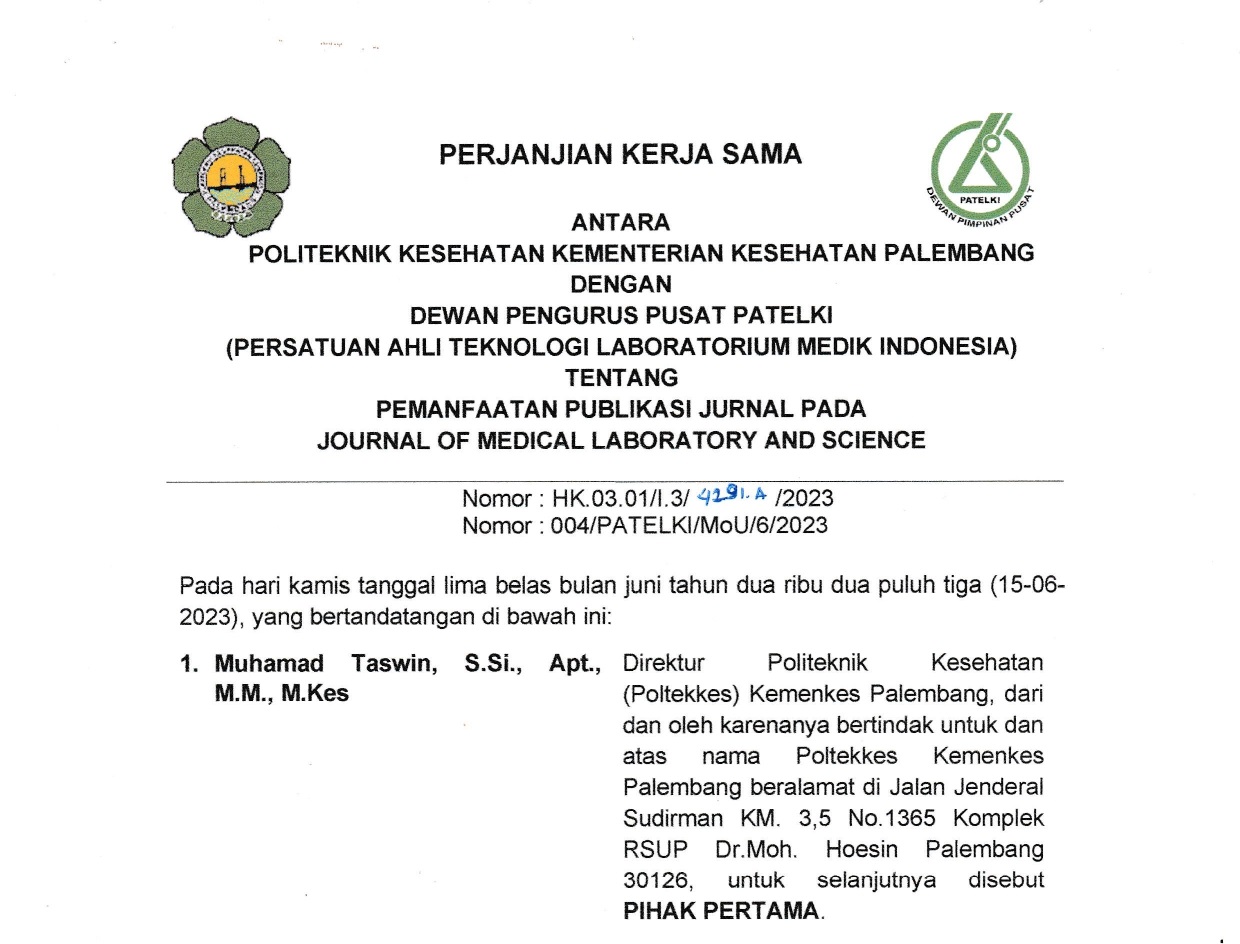THE DESCRIPTION OF IRON LEVELS OF WATER AT INDUSTRIAL HOUSING IN BATURAJA, OGAN KOMERING ULU
Abstract
Background: In everyday life, humans are very dependent on water and the quality of health is also very much determined by the quality of water used for daily needs. The presence of chemicals substances or contaminants in water (for examples Fe) that exceed the acceptable levels of standard can risk human health. It can cause failure in metabolism (hemochromatosis). Based on the Ministry of Health dictire No.32 year 2017 maximum level of iron allowed in water is 1.0 mg/l. The aim of this descriptive research was to determine the level of Iron in industrial housing water in Baturaja, Ogan Komering Ulu. Methode: The total samples were 15 home water taken by sistematic random sampling. The iron content was measured by Atomic Absorption Spectrophotometry (AAS) method. The results: showed all the samples were qualified with mean level 0.105227 mg/l, median 0,106000 mg/l, standar deviation 0,0175790 mg/l, the lowest level was 0.0789 mg /l and the highest level was 0.1345 mg/l. all watern samples (100%) met the requirements <1 mg/l and no samples did not meet the requirements >1 mg/l. 14 samples (93.3%) of iron levels in water based on acidity were not qualified <6.5 or> 9 and 1 sample (6.3%) of iron levels in water were qualified = 6.5-9. 15 samples (100%) of water content through distances that meet the requirements. The minimum level of iron is 0.0830 mg /l at a distance of 1- 50 meters and The maximum level of iron 0.1345 mg / l at a distance of 1-50 meters and 1-50 meters. Conclusion: The average level of Fe in Industrial Residential Water in Baturaja, Ogan Komering Ulu Regency, meets the quality requirements of environmental health quality standards for water media for sanitation hygiene purposes.
Copyright (c) 2021 Journal of Medical Laboratory and Science

This work is licensed under a Creative Commons Attribution-ShareAlike 4.0 International License.
Authors who publish with this journal agree to the following terms:
- Authors retain copyright and grant the journal right of first publication with the work simultaneously licensed under a Creative Commons Attribution License that allows others to share the work with an acknowledgement of the work's authorship and initial publication in this journal.
- Authors are able to enter into separate, additional contractual arrangements for the non-exclusive distribution of the journal's published version of the work (e.g., post it to an institutional repository or publish it in a book), with an acknowledgement of its initial publication in this journal.
- Authors are permitted and encouraged to post their work online (e.g., in institutional repositories or on their website) prior to and during the submission process, as it can lead to productive exchanges, as well as earlier and greater citation of published work














